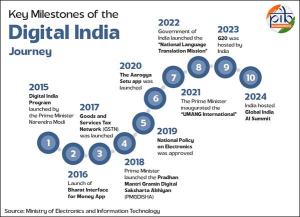India has developed its first indigenous MRI scanner, set to be installed at AIIMS-Delhi by October 2025. This initiative aims to lower MRI costs by 50%, reduce dependence on imports, and enhance public access to medical imaging.
Magnetic Resonance Imaging (MRI) is one of the most advanced and effective diagnostic tools in modern medicine. It is used to capture detailed images of organs, tissues, and structures inside the body, helping in the diagnosis of a wide array of conditions, including neurological disorders, heart diseases, and musculoskeletal issues. However, the high cost of MRI scans has often limited their accessibility, especially for patients from low- and middle-income backgrounds.
The new indigenous MRI scanner is expected to bring a major shift in this scenario. By cutting the cost of MRI scans by an impressive 50%, this development will make MRI technology much more affordable and available to a larger section of the population. For many patients, especially in rural and underserved areas, this could mean the difference between receiving a diagnosis on time or missing out on crucial treatment.
About India’s first indigenously developed MRI scanner:
- The first fully indigenously developed 1.5 Tesla MRI scanner designed for advanced medical imaging and clinical trials.
- It is developed by SAMEER (Society for Applied Microwave Electronics Engineering and Research), an autonomous R&D body under Ministry of Electronics and IT (MeitY).
- It is to be installed at AIIMS New Delhi by October 2025 for clinical evaluation and feedback.
- This project is developed under the national mission SCAN-ERA (Swadeshi Chumbakiya Anu-naad Chitran – Ek Rashtriya Abhiyaan), started in December 2014.
Key Features:
- Indigenous technology aimed at reducing treatment costs.
- 5 Tesla MRI system designed to match global clinical standards.
- Backed by government’s PLI scheme for medical devices.
- Complements development of other critical devices like CT scanners, LINACs, and heart valves under PLI.
About MRI Scanner Working:
MRI uses strong magnetic fields and radiofrequency pulses to align and excite protons in body tissues.
As protons realign with the magnetic field, they release energy, which sensors capture to create 3D anatomical images.
It is used for:
- Imaging of soft tissues, brain, spinal cord, muscles, ligaments, and tendons.
- Detecting tumors, aneurysms, neurological disorders, and musculoskeletal injuries.
- Functional MRI (fMRI) tracks brain activity during cognitive tasks.
There are certain risks associated with it such as:
- Magnetic interference: Dangerous for patients with implants like pacemakers or cochlear devices.
- Noise discomfort: Loud clicking sounds may cause discomfort; ear protection is recommended.
- Claustrophobia: Patients may face anxiety inside closed MRI tunnels; open MRI systems address this issue.
- Contrast agents: Risk of nephrogenic systemic fibrosis in dialysis patients from gadolinium-based agents.
Currently, India relies heavily on imported MRI machines, which come with a hefty price tag due to foreign manufacturing, shipping, and import duties.
This dependence has made the healthcare sector vulnerable to fluctuations in global markets and currency exchange rates. By developing its own MRI scanner, India is taking a bold step towards reducing this dependence on foreign imports, ensuring greater control over the technology, and creating a more self-sustaining healthcare ecosystem.
As India continues to battle healthcare challenges like overcrowded hospitals, limited access to diagnostic services, and high treatment costs, the development of the indigenous MRI scanner marks a significant milestone. It represents the country’s commitment to creating a more inclusive healthcare system, where access to life-saving medical technologies is not a privilege but a right for every citizen.
This move is a significant part of India’s broader push for self-reliance in the medical technology sector, in line with the “Atmanirbhar Bharat” initiative. Not only does this reduce costs associated with imports, but it also encourages innovation within the country, creating a strong foundation for future advancements in medical devices.



